【Learning Points】
- Esophageal varices bleeding usually don’t have symptoms at first, and only develop symptoms such as tarry stool or vomiting blood when it gets serious.
- Treatment of esophageal venous aneurysm bleeding: drug treatment, Sengstaken-Blakemore tube, Esophagogastroduodenoscopy, and surgical treatment.
- Care after treatment should include a bland diet, avoid fatigue and straining maneuvers, take medicine and return to the OPD for follow-up, attention to rebleeding signs.
I. What is esophageal varices?
Esophageal Varices is a common complication of liver cirrhosis. It is caused by portal hypertension. As portal pressure rises, the esophagogastric veins dilate and distend. These engorged and dilated veins are called varices. The esophageal varices can rupture and cause hemorrhage. It usually occurs at the low end of the esophagus.
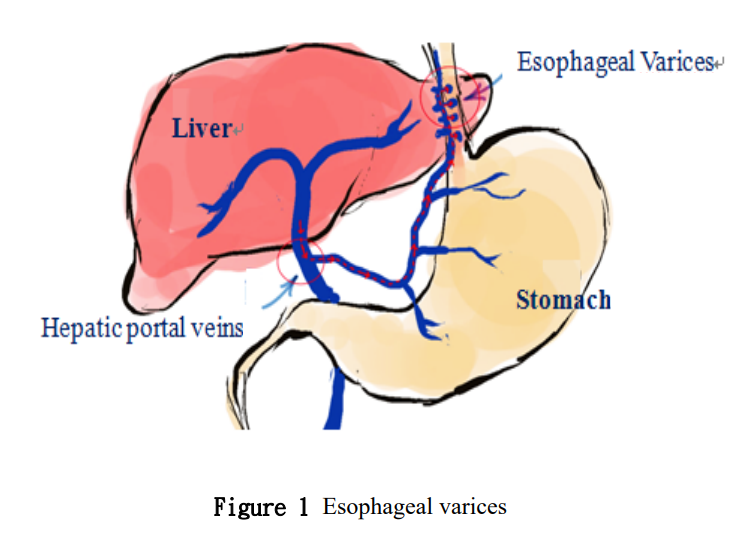
To deliver intelligent and holistic medicine and to provide the best healthcare
Compassion Quality Innovation Accountability
All information above has been reviewed by Gastroenterology specialists Edited and published by the Department of Nursing, Taichung Veterans General Hospital
II. What are the symptoms of esophageal varices bleeding?
Esophageal varices bleeding usually don’t have symptoms at first, and only develop symptoms such as tarry stool or vomiting blood when it gets serious.
Esophageal varices bleeding usually don’t have symptoms at first, and only develop symptoms such as tarry stool or vomiting blood when it gets serious.
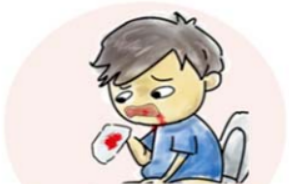 |
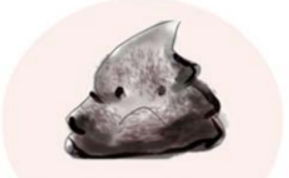 |
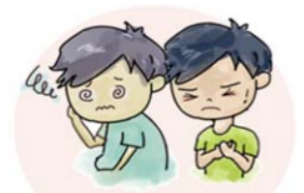 |
| Vomiting blood | Tarry stool | Dizziness palpitation |
III. How to manage ruptured esophageal varices?
- Drug thearpy:
To administer vasopressin(Glypressin/Sandostatin)to decrease portal pressure. - Sengstaken-Blakemore tube (SB tube):
To insert a Sengstaken-Blakemore tube to compress bleeding varices.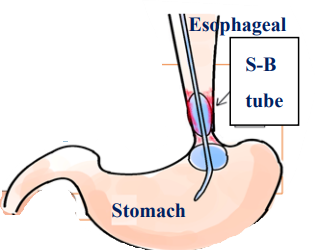
- Esophagogastroduodenoscopy (EGD):
- Endoscopic Injection Sclerotherapy: inject a sclerosing agent (e.g. histoacryl ) during an endoscopy to cause venous thrombosis and fibrosis.
- Esophageal Variceal Ligation: wrap elastic bands around the esophageal varices during an endoscopy.
- Surgical Treatment:
Due to advances in prophylactic endoscopic injection sclerotherapy and ligation, surgical treatment is rarely performed.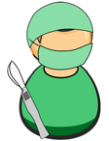
IV. Dietary Principles after esophageal varices bleeding:
Patients with acute bleeding should be fasting, and follow healthcare providers’ instruction on when to start eating after treatment.
When starting to eat, follow the instructions below:
Patients with acute bleeding should be fasting, and follow healthcare providers’ instruction on when to start eating after treatment.
When starting to eat, follow the instructions below:
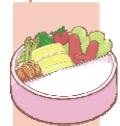 Bland diet Bland diet
|
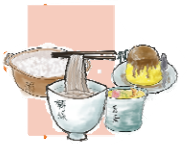 Food texture Food texture
|
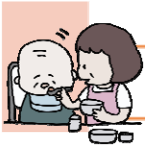 Chew slowly Chew slowly |
 Drug miling Drug miling |
| Direction | Example | |
| Liquid diet | Use a blender to blend food into smooth liquid. | Ex:milk, rice water, Oil-free clear soup, juice.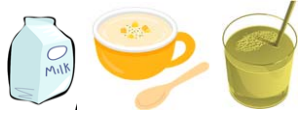 |
| Soft diet | Avoid rough or hard foods such as nuts. | Ex:gruel, steamed egg, bean curd, pudding、 Vermicelli. |
V. Care after treatment:
|
Bland Diet
|
|
Avoid fatigue
|
|
Avoid straining maneuvers
|
|
Take medicine and follow up
|
|
Pay attention to rebleeding signs
|
VI. Conclusion
Esophageal Varices require regular and repeated examination and treatment. Before that, there’s still a risk of bleeding. Patients with esophageal varices should maintain healthy lifestyle, take medicine as instructed, return to the OPD for follow-up, and control underlying disease, such as liver cirrhosis or tumor, in order to reduce the risk of rebleeding.

VII. Reference
- 游逸茹、莊寶玉、林秀華(2021).一位反覆食道靜脈曲張出血首次插管病人之加護經驗.台大護理雜誌,17(1),53-65。doi:10.6740/NTUHJN.202101_17(1).0006
- 臺中榮民總醫院(2021).肝膽腸胃科衛教專區-如何避免食道靜脈曲張須知.取自:https://reurl.cc/LpQ7j4
- 臺中榮民總醫院(2023).營養室衛教專區-病人飲食手冊,取自:https://reurl.cc/m8Qb9
- 謝睿穎(2022).食道靜脈曲張(瘤),該怎麼處理?.取自:https://www.liver.org.tw/journalView.php?cat=74&sid=1080&page=1. 2023年11月12日
- Garbuzenko, D. V., & Arefyev, N. O. (2020). Primary prevention of bleeding from esophageal varices in patients with liver cirrhosis: An update and review of the literature. Journal of Evidence-Based Medicine, 13(4), 313–324.
簡易測驗
Let's take the test to make sure you understand.
評語
統計結果不開放
請登入後才可以評分
未登入或權限不足!
- 位置
-
- 資料夾名稱
- English
- 上傳者
- 吳雪瑛
- 單位
- 中榮護理衛教
- 英文名稱
- How to Prevent Esophageal Varices from Hemorrhage
- 分類
- 疾病
- 科別
- 英語
- 癌症照護
- 否
- 建立
- 2024-01-29 14:27:55
- 制訂日期
- 2008-09-23
- 最近修訂
- 2024-03-19 11:52:00




